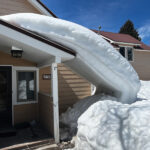
Effectively combat heat transfer and reduce condensation
Choosing the right insulation and having it properly installed in your building is a critical factor to saving money, improving comfort and contributing to sustainability. Whether constructing a new facility or retrofitting an existing building, adding insulation can effectively combat heat transfer and reduce the potential for condensation. Some buildings have additional challenges.
Metal buildings are unique primarily because steel is an excellent conductor of heat. Metal has essentially no R-value or thermal resistance and can store and radiate unwanted heat in summer conditions. In winter conditions, a cold metal roof or purlin can lead to condensation and premature building envelope failure. Ideally, a metal building includes a continuous insulation system and vapor retarder to reduce the potential for condensation.
Water vapor transmission
ASTM defines a vapor retarder as a material or system that adequately retards the transmission of water vapor under specified conditions. The permeance of a water vapor retarder for construction typically is less than 1 perm. A perm rating is a measure of the diffusion of water vapor through a material. Vapor diffusion accounts for only a small amount of the total moisture in a building. Therefore, other means should be utilized to reduce water vapor migration due to air infiltration.
 |
A vapor retarder slows the rate of water vapor diffusion but does not completely prevent its movement. Building occupants, certain appliances and plumbing equipment generate moisture that is carried in the air as vapor. As water vapor moves from a warm interior through construction materials to a cooler surface, the water vapor may condense as liquid water that can damage the building. It is for this reason vapor retarders are installed in buildings.
Accepted design practice is to provide a water vapor retarder on the exposed surface below roof insulation in a metal building. This is to prevent condensation on the bottom side of the roof panels. Ideally, this would also include the bottom of the purlins as well.
Reflective insulation has been used in metal buildings for more than two decades. One of the most common products is a reflective bubble insulation (RBI), which is an insulated facing (R1 to R2) using low-emittance surface(s). The RBI will provide added thermal resistance to the region between the roof panels and the interior air. This added resistance comes about because of the material’s thermal resistance and an increase in the air film resistance when the surface emittance is changed from a high value to the low value provided by the RBI.
RBI-type products can be draped over the purlins or installed below the purlins. A combination of insulation above and below the roof purlins provides additional benefits and is often the only option in retrofitting metal buildings with insulation. Regardless, attention to detail during installation is important to ensure a continuous vapor retarder in the building envelope.
Reduced energy consumption
Shelby, N.C.-based Fastenal Co. was operating out of an older metal warehouse insulated with a standard vinyl-faced fiberglass batt. Due to the age of the building and insulation, energy efficiency was lacking, and the vinyl facing was torn and hanging in areas of the retail showroom. Charlotte, N.C.-based Standard Insulation installed Auburndale, Fla.-based Fi-Foil Co.’s RetroShield System using a scissor lift and a two-man crew. The entire job was completed in about a week and the Fastenal retail showroom continued operations as usual throughout the installation process.
The insulation improved the indoor appearance of the showroom by covering the old eyesore insulation, added some R-value, covered the bottom of the metal purlins, provided a vapor retarder and sealed off some unwanted air infiltration. The system increased the building’s energy efficiency. This reduced energy consumption, saving money and making a more comfortable building.
Bill Lippy is president of Fi-Foil Co. Auburndale, Fla. To learn more, visit www.retroshieldsystem.com or email info@fifoil.com.






